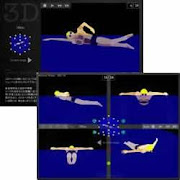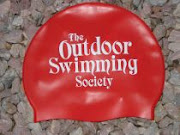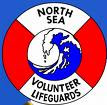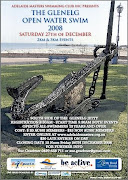
Courtesy of WOWSA, Huntington Beach, California.
In the Olympic 10 km Marathon Swim in the Shunyi Olympic Rowing-Canoeing Park, each athlete will be assisted by one coach of their choice. What is it that the coaches do? Why is it so important? And, why is there so much pressure?
The history and responsibilities of open water swimming coaches goes back at least as far back as the escort crew of Captain Matthew Webb, who was the first person to successfully swim across the English Channel in 1875. Open water swimming coaches not only guide their athletes' training and nutrition on a daily basis, but also formulate race strategy, serve as their eyes and ears and, very importantly, serve them fluids during the 10K.
Open water coaches, like their pool counterparts, typically spend hours walking up and down the deck of a pool training their swimmers and oversee their training in a gym for dryland exercises. Additionally, they spend hours walking up and down shorelines or sitting in kayaks, paddleboards or motorized escort boats following their athletes in open water.
All these thousands of hours of devotion, strategizing and coaching boil down to a race of less than two hours. And - at least for the coach - this 2-hour race boils down to a few critical seconds.
During the 2-hour race, the swimmers will pass their coach, standing on a floating feeding station, four times. The coaches will yell, whistle and cheer for their swimmer on every loop. Each time the swimmers pass the floating feeding station, the coaches will arm themselves with a feeding stick and the athlete's favorite drink.
These drinks include Gatorade, fortified water and as many concoctions as there are swimmers. Many athletes are fed different formulations during the race due to varying physiological needs.
During the first 2.5 km loop, the swimmers generally do not stop. However, during the next 3 loops, the swimmers and coaches must synchronize their timing perfectly. Any error in timing and the swimmer's chances of medaling drops considerably.
As the coaches lean, kneel and stretch out as far on the race course as possible, the swimmers swing wide of the straight-line course to cruise pass the feeding station. The swimmers have just one shot at grabbing their cups that are delicately cradled on the coaches' feeding stick. Observers have equated the frantic swimmers to hungry sharks leaping for one last bloody piece of a sea lion carcass.
Unlike NASCAR drivers who know where their pit crews are located, the swimmers do not know exactly where their coaches are positioned until they see them on the first loop.
As the swimmers fight for position coming into their first feeding, they expect the end of their feeding sticks to be slightly above the water's surface, facing just at their preferred angle, so they can quickly reach up and grab their own cup without breaking their stroke rhythm. A missed stroke means losing valuable ground to their competitors where the difference between gold and bronze is often less than 2 seconds. If the coach-swimmer teamwork is successful, the swimmers reach up for their cup, roll on their backs, gulp their drink and resume swimming - all without losing momentum - within 2 seconds.
Meanwhile, the coaches themselves are being pushed and jostled by other coaches trying to reach their own athletes at the optimal position. Like a Tokyo subway train, there is only so much space and too many people. In other words, the coaches have no more than 2 seconds to position their feeding stick at the water's surface, hold and release the swimmer's cup at the optimal position, and then retrieve their feeding stick without hitting any competitors.
So, unlike the running marathons, where there are frequent water stops along the race course and all kinds of volunteers and cups of water to aid the runner, the swimming marathoners have just three chances to get fluid during a warm 2-hour race.
Despite the coach's best efforts and years of experience, when a large pack of swimmers come flying into the feeding station together, the coaches face additional problems. Sometimes, swimmers may grab or inadvertently hit other swimmer's feeding sticks or spill their competitor's cups. In these cases, no apologies are made...both swimmers and coaches simply chalk it up to bad luck and poor timing.
Second, if a pack 3, 4 or 5 swimmers wide come into the feeding station together, the feeding stick simply cannot reach the swimmer who is positioned furthest from the feeding station. In those cases, the swimmer usually turns up the course and accepts the unfortunate situation.
Third, when a very large group of swimmers heads towards the feeding station, all splashing and swimming very close to one another, the only thing that can be positively identified is a...very large group of swimmers splashing and thrashing close to one another. This is especially true with the men, who often remove their swim caps during races in warm water. Occasionally, as coaches stretch the feeding stick out to the thrashing pod of athletes, they notice their swimmers are in a different position and swimming away from the feeding station.
Occasionally, tempers flare and expletives in numerous languages can be heard; sometimes directed at others, sometimes direct at themselves.
Yet, an unwritten gentlemen's code of conduct is strictly followed at the feeding stations because every open water coach knows that if he or she were to fall in the water and disturb another swimmer, his or her own swimmer would be immediately disqualified.
The coach's formula is pretty simple. 3 feeds x 2 seconds each x 100% accuracy = potential Olympic gold.
In other words, 4 years of standing on pool decks, 4 years of walking along shorelines, 4 years of plotting strategy, 4 years of traveling the world to competitions - and the coach's best efforts can go up in smoke within 2 seconds.
So the pressure is on - the coaches.
Copyright © 2008 by World Open Water Swimming Association




















No comments:
Post a Comment